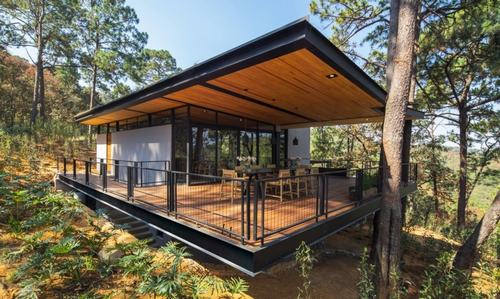What types of green materials can replace concrete?
The production of commercial concrete materials emits tons of greenhouse gas emissions each year, contributing to global climate change. The following construction materials are alternatives to concrete because of their lower environmental impact than concrete.
Recycled plastic

Instead of mining and extraction, researchers are creating concrete with recycled plastic and resin ingredients. This method will help reduce greenhouse gas emissions, while providing new applications for waste treatment.
Straw bales

Straw bales are used to create the walls, bales of straw are arranged in metal frames. This material can replace concrete, wood, plaster, fiberglass or stone.
Plant concrete

Concreting method for floors, walkways, sidewalks, car roads, allowing grass or vegetation to grow on the surface. This method provides benefits in reducing concrete usage, improving water absorption and drainage.
Clay

Clay has been used in construction for thousands of years and will continue to be used for a long time. Houses built with rammed earth according to modern methods are safer when using additional reinforcing bars or bamboo.
Hempcrete

Hempcrete is a lightweight building material, shaped like a cinder block, made by mixing hemp fiber with lime. Although this material is structurally unstable, it offers flexibility and natural insulation. This ultra-light material can significantly reduce transportation energy.
Bamboo

Bamboo is really a promising building material for modern buildings. Bamboo is a combination of durability, light weight used to frame buildings. Bamboo is an alternative material for reinforced concrete, especially in difficult traffic areas, needing reconstruction after natural disasters.
Wood

Wood has many benefits over many industrial building materials like concrete or steel. Not only has the ability to absorb CO2, wood does not require energy-intensive methods to treat.







